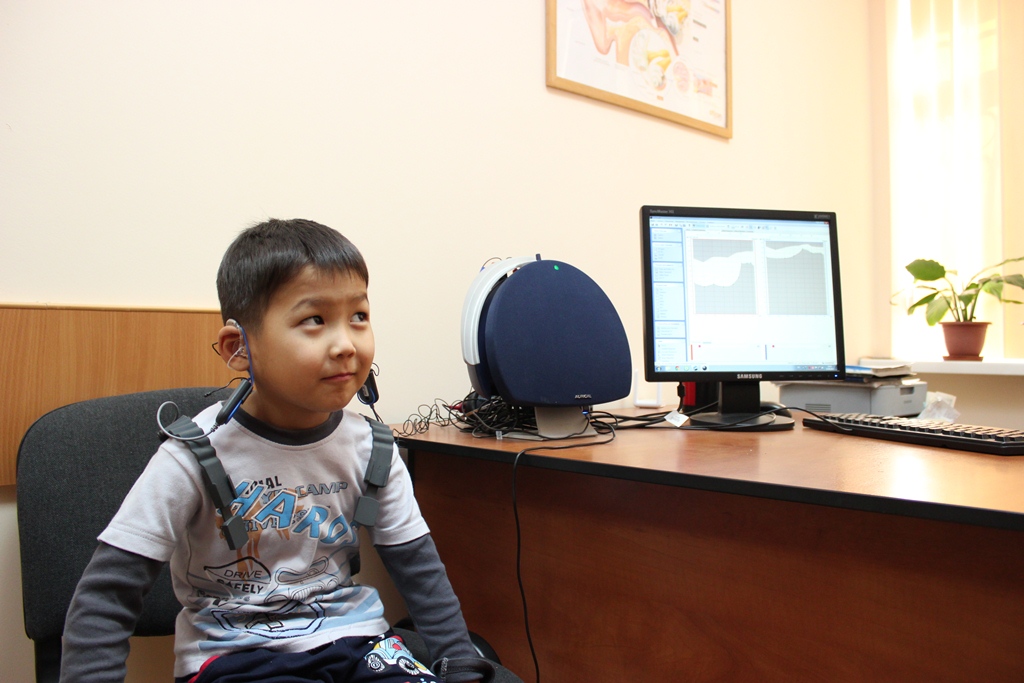Selecting and setting up hearing aids
The process of getting fitted with hearing aids means selecting a hearing aid model and setting it up according to the patient’s audiogram. Selection starts with choosing from the basic models, the maximum output sound level and acoustic gain of which match the degree of hearing impairment and audiogram configuration.
Hearing aids help the acoustically challenged and those suffering from substantial hearing loss preserve or develop their ability to communicate with people around them.
The purchase of a hearing aid is just the first step towards restoring hearing. You may require a certain time to become comfortable with the hearing aid. During this period, being patient and remaining enthusiastic is most important.
Making a custom ear mold is a necessary condition of getting fitted with hearing aids. The mold will ensure that the hearing aid rests securely behind your ear, improving the quality of amplified sound transferred from the hearing aid to the drum membrane. The custom ear mold is made based on the patient’s ear impression (please see Section “Custom Ear Mold Making” for more details).
The hearing aid is set up by a audioprosthetist using specialized computer software. The audioprosthetist will fine tune the hearing aid using the latest Aurical FreeFit system that has an option to measure the RECD (real ear coupler difference), i.e. the difference in dB between the level of acoustic signal transferred to the ear and the reference signal measured in a 2CC coupler. Furthermore, the size of the acoustic meatus, the middle ear’s resonance and resistance are to be taken into account as well. The advantages of this objective measurement are: a more accurate and reliable setup versus measuring functional gain, as well as the possibility to obtain data of the maximum sound pressure level (SPL) applied to the ear following the hearing aid setup. This appears to be especially important when fitting infants and babies due to the small size of their ear canals. In addition, a specialist is able to rely on objective results, as no baby can assess their feelings accurately or explain how well they hear when wearing a hearing aid.
The selection and setup of hearing aids involve a step-by-step sequence of interaction with the patient.
The first visit will start with the specialist’s conversation with the patient. The goal of such a conversation is to find out the history of the patient’s hearing impairment, whether or not a hearing aid has been worn earlier, and to get information about the patient's life style (occupation, habits, and hobbies).
Based on the (pure tone and speech) audiogram data, the specialist will offer the patient several models of hearing aids to choose from, which would be able to compensate the patient’s hearing loss.
After the initial tune-up of the hearing aid, the patient will choose the option they believe to be optimal for them considering the following criteria: how well the hearing aid ensures speech intelligibility, whether the sound is natural, whether they hear their own voice in a distorted way, how attractive the device is visually (its dimensions), and, of course, how much it costs.
After the hearing aid is selected and set up, the audioprosthetist forwards further down the line for the custom ear mold to be made.
Subsequently, the device is subject to the fine tuning inside the patient’s ear using the Aurical FreeFit system with the finished custom ear mold already installed. The specialist will offer the patient to listen to sounds, words, and phrases. The patient tells the specialist about their experience (their feelings when wearing the hearing aid, how they perceive their own voices, whether there are any noises, how intelligible speech is, etc.). The first tune-up is rarely the optimal or final one.
The patient will receive the full information on how to use the hearing aid, the required care for the ear mold, and on adapting to the hearing aid.
When initially adjusting the hearing aid, an adaptation program is provided for new users, i.e. the sound is turned up gradually as users get more comfortable with the hearing aid.
It will take several sessions of tuning by the audioprosthetist to correct hearing loss properly. Any subsequent tunes up are performed as per requirement. The audioprosthetist will help you choose the hearing aid depending on your hearing needs and expectations.
Tel.: +7 (727) 394 45 13, 394 46 23
Please note that the process of fitting a child with a hearing aid differs from that of an adult.
- Specifics of fitting children with hearing aids
- Recommendations to parents on their children’s adaptation to hearing aids

